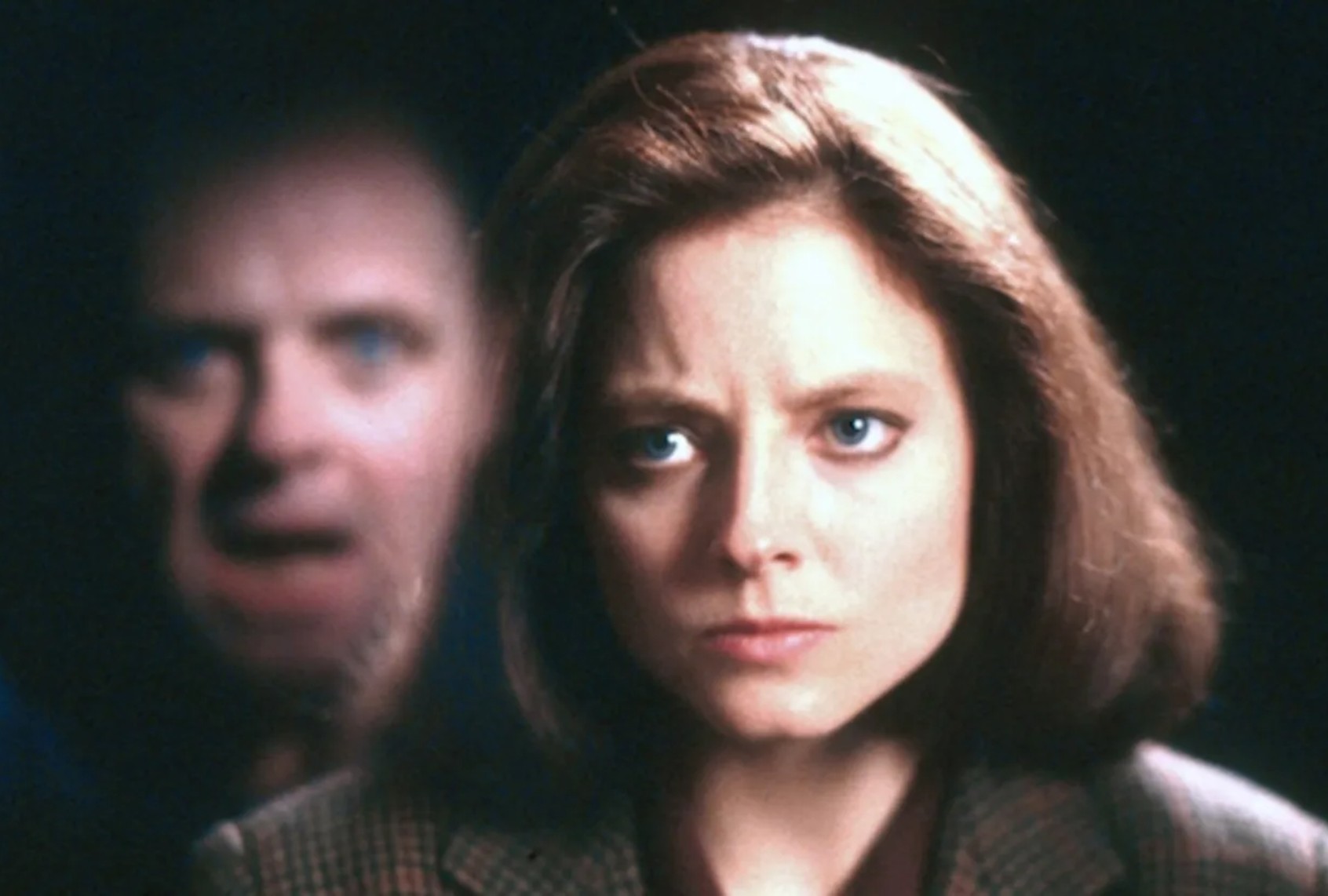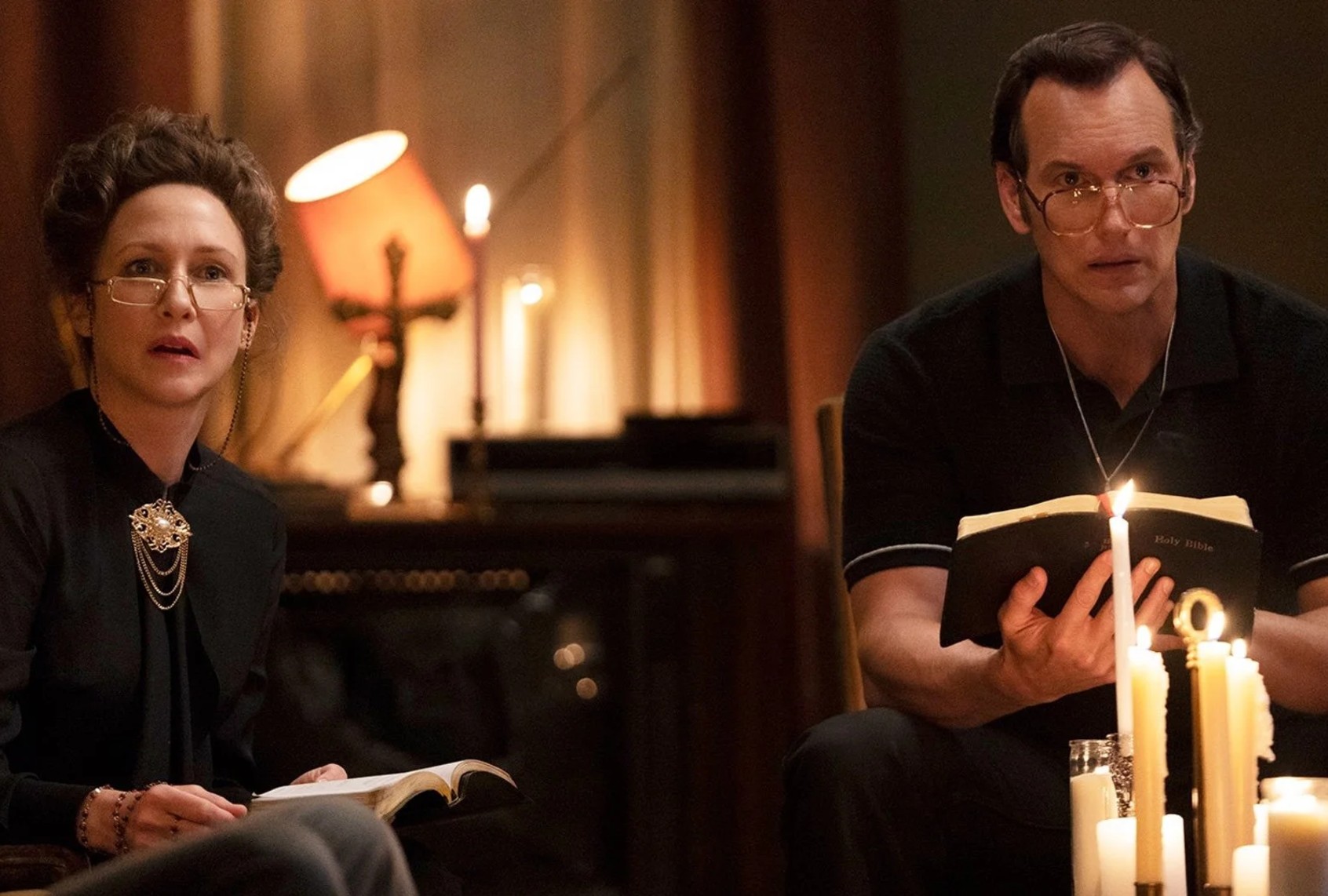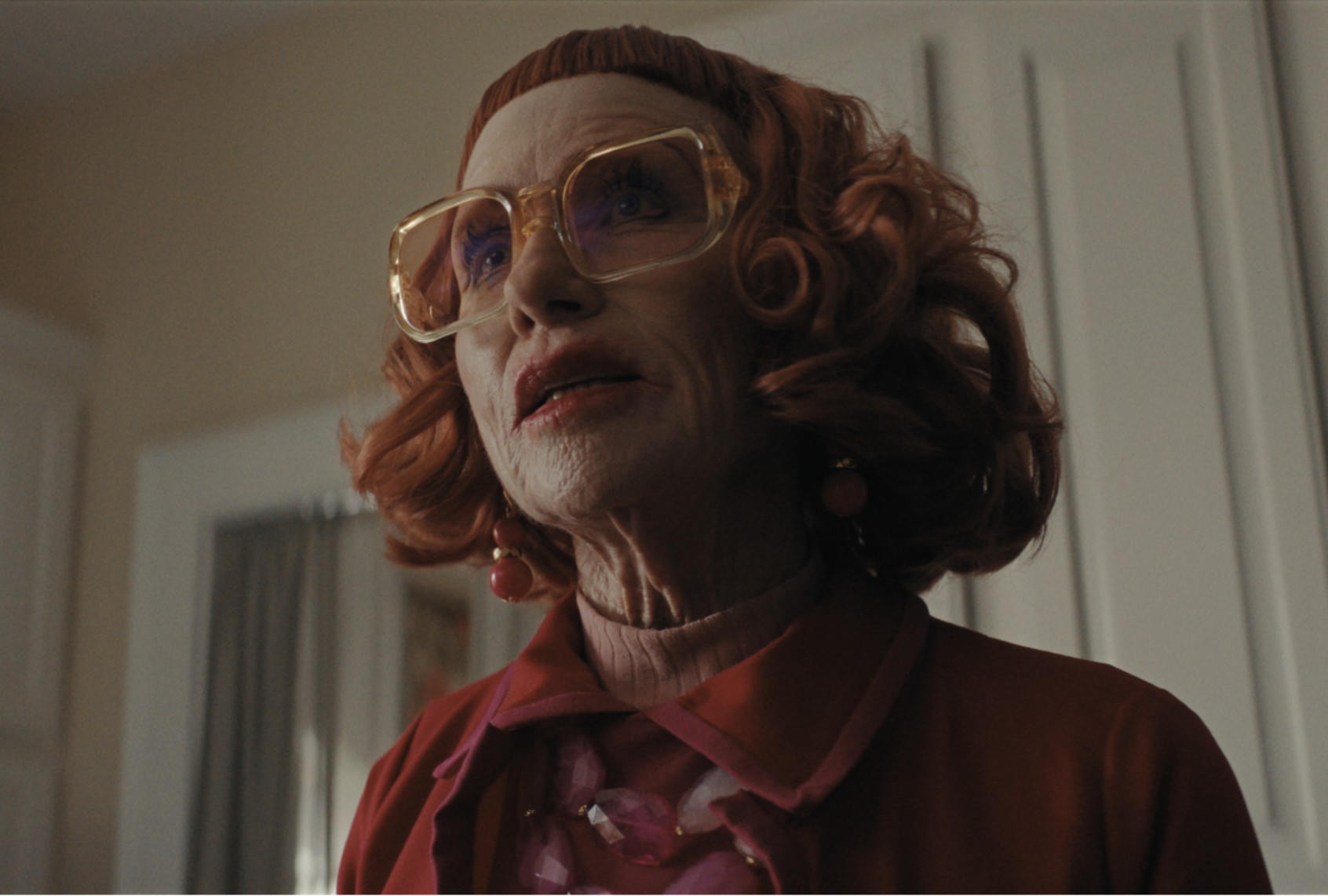Dear reader, I’m delighted to tell you that, if you’ve ever been at a social function and had to hear someone utter the words, “Toni Collette should’ve been nominated for an Oscar for ‘Hereditary,’” you may be entitled to compensation. (Smaller monetary rewards may be awarded to those who have seen similar sentiments on social media. Please record your responses and tie them to the foot of a carrier pigeon, in care of me; the pigeon will know where to bring it.) It’s not that Collette’s performance in Ari Aster’s 2018 horror film is so bad that it’s worthy of a class action lawsuit, but rather, that her work is so incredibly good that hearing about how Collette was robbed of a nomination has become utterly banal. Anyone who’s seen the film knows it firsthand, and anyone who hasn’t has probably heard chatter that Collette was overlooked because “Hereditary” is a horror film. Would it have been nice to see Collette included among her contemporaries in the best actress lineup, especially if she could’ve knocked out a less-deserving performance like, oh, I don’t know, Glenn Close in “The Wife”? Of course. But we can’t change the past; we can only advocate for a different future moving forward.
This year, horror aficionados came close to seeing this wrong finally righted for the first time in years when Demi Moore, director Coralie Fargeat and their film “The Substance” were nominated in three of the big four categories — best picture, best director, best actress and best actor — at the Oscars. Despite the film’s absurd splatter gore, timely parody and hyper-stylized direction, all things the Academy doesn’t typically take kindly to, Moore’s chances looked decent. While “The Substance” was an unlikely win for the film itself, Moore took home gold at the Golden Globes two months before, and if she won the Oscar, it would be the first time a horror film has won in a big four category since Natalie Portman took home the Oscar in the same category for “Black Swan” in 2010. (Prior to this, no horror film has won in a big four category since “The Silence of the Lambs” swept the Oscars in 1991.) But despite the thrust behind her, Moore lost to Mikey Madison for “Anora,” causing both horror buffs and casual viewers to contemplate what it might take for a new horror film to not just break through the awards space, but win.

(Orion Pictures) Anthony Hopkins and Jodie Foster in “Silence of the Lambs”
Because horror is a genre built on excess, it’s also an easy punching bag. Films aren’t doing well? Blame the gore, blame the violence, blame the lack of new ideas. Critics have pronounced the genre dead just as many times as they’ve proclaimed its resurrection as soon as another hit comes along.
The genre is, after all, still enjoying another renaissance period, which many viewers hope will be enough for awards voters to take horror seriously. After being mired by C-movie slashers and torture porn — some of which admittedly got a bad rap — throughout the 2000s, horror got a much-needed boost at the turn of the decade, when “Black Swan” returned an air of prestige to the genre. Films like “The Witch,” “The Babadook” and “It Follows” pushed this resurgence even further throughout the 2010s, with Collette’s performance in “Hereditary” bringing the genre back into awards conversation and further cementing A24, the movie’s distributor, as a huge theatrical power player. With horror dominating both the box office and the larger zeitgeist year-round, the genre has long since graduated from the days of seasonal Halloween releases and studios dumping their frightful flops into theaters in January to die a quick death during the post-holiday slow season. While the genre’s renewed mainstream status does make one wonder what a horror movie needs behind it to actually pick up awards, instead of just being part of the tertiary conversation, that question misses the point of why horror has become so popular once more. A genre as wide-reaching and weird as this one doesn’t need golden statues to be legitimized. In many ways, horror has already won, and trying to push it back toward Oscar glory is a futile, Sisyphean endeavor.
From a purely mathematical standpoint, horror’s dominance is irrefutable. Consider this year’s box office numbers from late summer into early fall. Thanks to some mysterious marketing, stellar trailers and months of word-of-mouth hype, Zach Cregger’s “Weapons” opened domestically with a cool $43.5 million against its $38 million budget, and earned the top spot across three more weekends in August. Funnily enough, the only thing that could topple the “Weapons” reign was another horror film, “The Conjuring: Last Rites,” which raked in a jaw-dropping $84 million over Labor Day weekend — not bad for the middlingly reviewed sixth film in a long-running franchise. A cynic might argue that, like pumpkin-flavored treats appearing in stores during the first week of August, these successes are merely the product of early excitement for the Halloween season. But even a skeptic can’t deny the power of “Sinners,” which dominated the box office and cultural conversation for weeks following its April 18 release. Whether these films are born of an original idea, or they’re the sequel of a sequel based on a true story, horror has real draw.

(Warner Bros. Pictures) Vera Farmiga as Lorraine Warren and Patrick Wilson as Ed Warren in “The Conjuring: Last Rites”
For scare obsessives and curious minds, this has long been the case. Any horror fan will tell you that, despite the peaks and valleys inevitable with all types of filmmaking, the genre has always had its strong contenders and hidden gems, underseen by mainstream American audiences. There are plenty of scrappy indie thrillers and international chillers that can pick up the slack outside of the glitzy domestic market, where Hollywood horror often gets lost in its own self-important sauce. But because horror is a genre built on visual and emotional excess, it’s also an easy punching bag. Films aren’t doing well? Blame the gore, blame the violence, blame the lack of new ideas. Critics have pronounced the genre dead just as many times as they’ve proclaimed its resurrection as soon as another string of hits comes along. It was already safe to say that the genre wasn’t going anywhere decades ago. But now that horror seems to have secured a permanent place in awards speculation, those old questions of whether or not these films could be taken seriously seems to have finally quieted, replaced by the roar of heightened prestige.
Start your day with essential news from Salon.
Sign up for our free morning newsletter, Crash Course.
But the resurgence in horror’s popularity didn’t happen overnight, either. This era of “elevated” horror — a phrase I deign to use, given that fantastic, well-rounded horror films have existed since the genre’s inception — owes a great deal to A24 and NEON, the two distributors turned production companies that have led the charge in validating horror for a new generation. NEON and A24 are not merely production companies or film distributors; they are capital-B brands, marketing themselves as much as they do their movies. One of A24’s earliest horror hits, “The Witch” — a spare yet dreadful and beautifully shot folktale — did considerable work synonymizing the company with prestige horror. What started as buzz among niche horror circles about the latest A24 acquisition soon broke through to the mainstream, with moviegoers excited by the opportunity to see something that might be different from the typical slasher or ghost story. NEON has followed suit, wisely throwing millions of dollars toward marketing to make a film like “Longlegs” into grassroots hits.
It would’ve been incredible to see something as bold and in-your-face as “The Substance” take home a best picture Oscar, but accolades are no longer the definitive proof of a genre’s financial viability — the viewers are.
It’s not just that A24 and NEON are distributing and producing innovative horror, but that these films exist alongside the companies’ wide spate of other titles that reflect more classic ideas of what prestige filmmaking looks like. Both companies hold titles with best picture wins, with NEON repping “Anora” and “Parasite,” and A24 behind “Everything Everywhere All at Once” — with several others in either company’s portfolio nominated for the Academy’s biggest award. And it doesn’t take a discerning eye to realize that the horror movies distributed and produced by these companies share similar themes and narratives to their awards-bait dramas, told in ways that skew scarier. Don’t call it a coincidence that so much of the marketing for “Longlegs” included pull quotes from critics comparing the film to “Silence of the Lambs.” If Jonathan Demme’s procedural, which is arguably just as much of a thriller and drama as it is a horror film, could take home Oscar gold, what’s stopping NEON and A24 from breaking through industry red tape with the right entry into their personal horror canons?
We need your help to stay independent
While that would be an exciting achievement for horror in its current state, it’s one that simply isn’t necessary. Contemporary horror has already sailed past the grace period that detractors used to give the genre when it would surge before inevitably stumbling once more. These days, those falters are fewer. And though there are still plenty of cheap knockoffs of better movies and eye-rollingly dumb splatter films desperately trying to mooch goodwill from the genre’s popularity, the number of horror films that at least have some worthwhile redeeming qualities outnumber the duds. Even films I haven’t been crazy about, like “Weapons,” are interesting in the ways that they dare to be different, even if they strike out when they swing for the fences. The genre doesn’t need to be legitimized by awards voting bodies because it already has a growing army of dedicated viewers, curious enough to roll the dice and spend their hard-earned cash on risk-taking filmmaking. Granted, it would’ve been incredible to see something as bold and in-your-face as “The Substance” take home a best picture Oscar, but accolades are no longer the definitive proof of a genre’s financial viability — the viewers are.
So don’t be discouraged if the awards campaign for Amy Madigan’s delightfully menacing “Weapons” villain, Aunt Gladys, doesn’t score the impeccable character actor her second Oscar nomination. If you want to see her character’s influence, take a scroll through some Instagram carousels while hungover on November 1. You’ll be sure to notice at least 15 Aunt Gladyses, in cheap auburn wigs and overdrawn red lipstick. Even if it can’t be measured by dollars and cents, that’s a real cultural impact. Spending the next 10 years lamenting Madigan’s potential snub would be nothing more than reductive, implying that her work is only worthy if it’s awarded by stuffy voters who maintain little respect for horror, anyway. Horror has always been the underdog genre, a category of filmmaking defined by its fearlessness and rejection of permission. No amount of prestige can change that, nor should it.
Read more
about innovative thrills and chills


